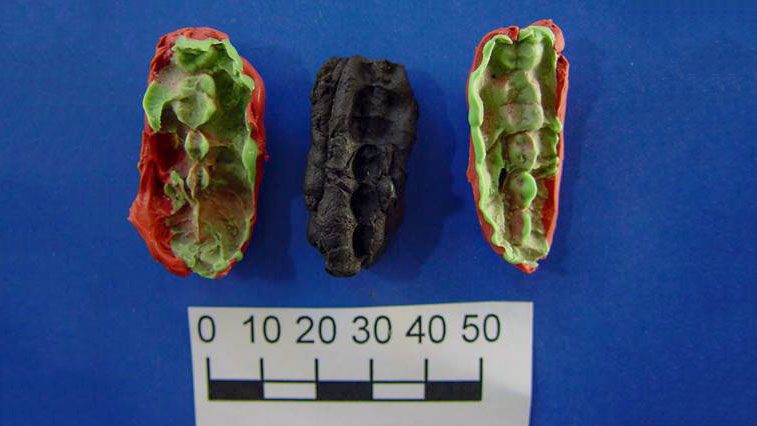New Zealand anthropologists have recently uncovered evidence that ancient people used a natural form of “gum” to create adhesives for hunting.
Birch bark from Sweden was a crucial material that ancient peoples utilized to produce a type of adhesive through a chewing process similar to modern chewing gum.

Researchers have discovered “ancient gum”.
This special adhesive is referred to by researchers as “ancient gum” because it has preserved the dental impressions of ancient people and traces of DNA for thousands of years.
The ancient peoples living in Scandinavia were the first to know how to use this special adhesive.
Based on analyses of collected samples, anthropologists determined that both males and females, including children as young as five, created these adhesives from birch bark.
Lisa Matisoo-Smith, a molecular anthropologist at the University of Otago in Dunedin, New Zealand, stated: “It is possible to extract DNA from something that was chewed thousands of years ago.”
Previously, in the late 1980s, a group of Swedish archaeologists excavated a pit at an archaeological site called Huswise Klev in western Sweden.
There, they discovered over 100 blackened, finger-sized lumps marked with distinctive dental impressions. Chemical analyses revealed these to be adhesives derived from plant resins.
Anders Gotherstrom, a co-author of the study published in the journal Scientific Reports on January 23, noted that people during the hunting-gathering period likely chewed the resin to use it as glue when assembling tools and weapons.
He remarked: “This is a very plausible hypothesis. Of course, they might have chewed it just because they liked it or thought it had some medicinal purpose.”
The researchers found that ancient toolmakers heated and distilled birch resin over a fire to soften it, chewed pieces of it into a malleable state, and then used it as adhesive to attach flint to wooden or bone shafts for crafting weapons and tools.
This is the first time archaeologists have found DNA from hunter-gatherers in Scandinavia, clearly linked to newly discovered stone tools. It indicates that the people in Scandinavia 10,000 years ago used a much more advanced stone carving technique than other populations in Eastern Europe.
It also suggests that Europe was not the sole cradle of Stone Age technology. As prehistoric people migrated from the east, specifically from Russia, they also possessed remarkable technologies. The two groups not only exchanged genes but also technologies that helped their cultures develop together.
On a smaller scale, DNA samples from three chewing gum residues revealed insights into the lives and culture of people 10,000 years ago. The dental impressions in the residues were from baby teeth, indicating that tool-making was not solely an adult activity. Two of the three genetic samples were from women, suggesting that tool-making was not exclusively a male task.
A previous study in 2019 mapped the genetics of individuals who had chewed gum.

The location where prehistoric Scandinavian gum residues were found.
In the evolving field of DNA sequencing technology, archaeologists have discovered ancient human genes at many surprising sites. Earlier this year, a clay pipe used for smoking also revealed the genes of a female slave who once lived in Maryland.
Natalija Kashuba and her colleagues state that gum, tree resin, and similar materials found around the world are a well-preserved source of prehistoric human DNA, even in places where their bones no longer exist.
These will be invaluable evidence for us, modern humans, as we look to reconstruct the lives of our ancestors.
|
In 2019, scientists reconstructed the image of a woman based on DNA extracted from a 5,700-year-old piece of chewing gum. She likely had dark skin, brown hair, and blue eyes, originating from Syltholm on Lolland – an island in Denmark in the Baltic Sea. The researchers nicknamed the woman “Lola”. At that time, researchers said this was the first instance of a complete genetic profile of an ancient human being obtained from anything other than human bones. |


















































